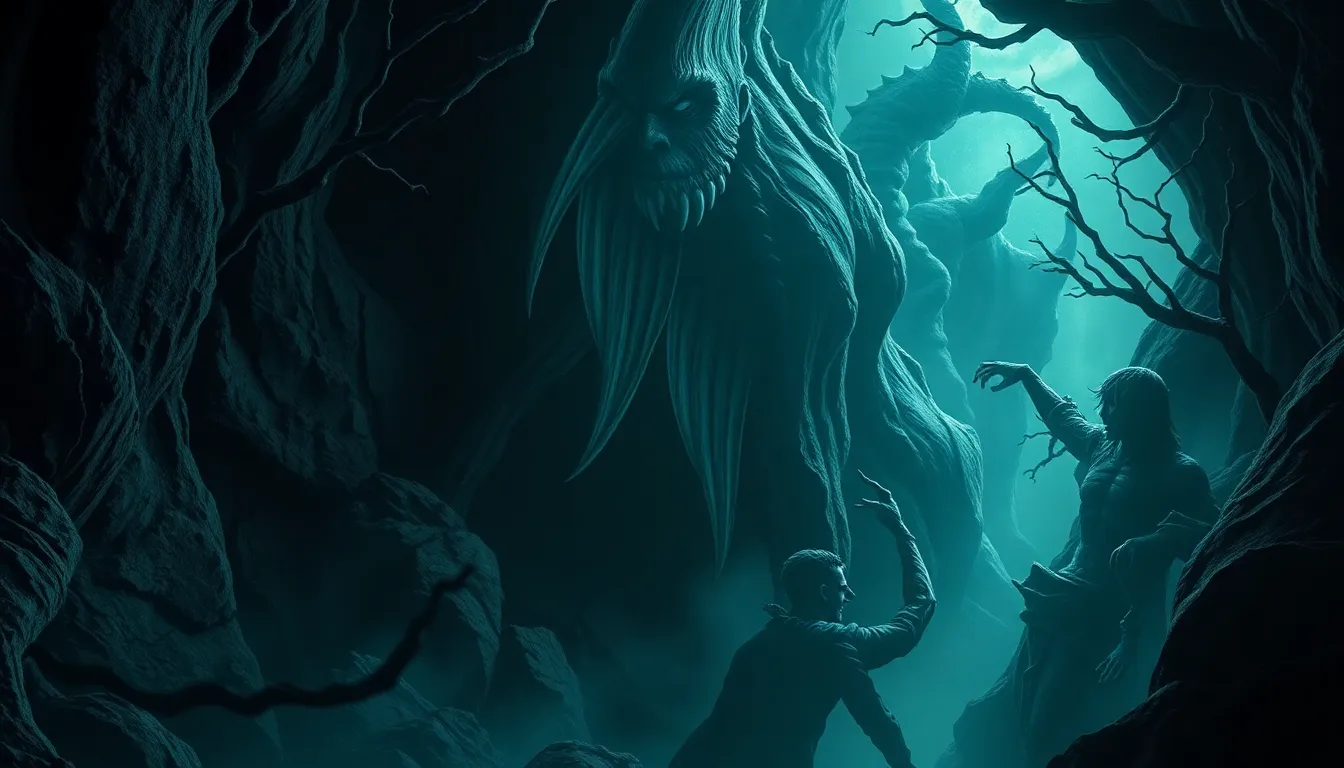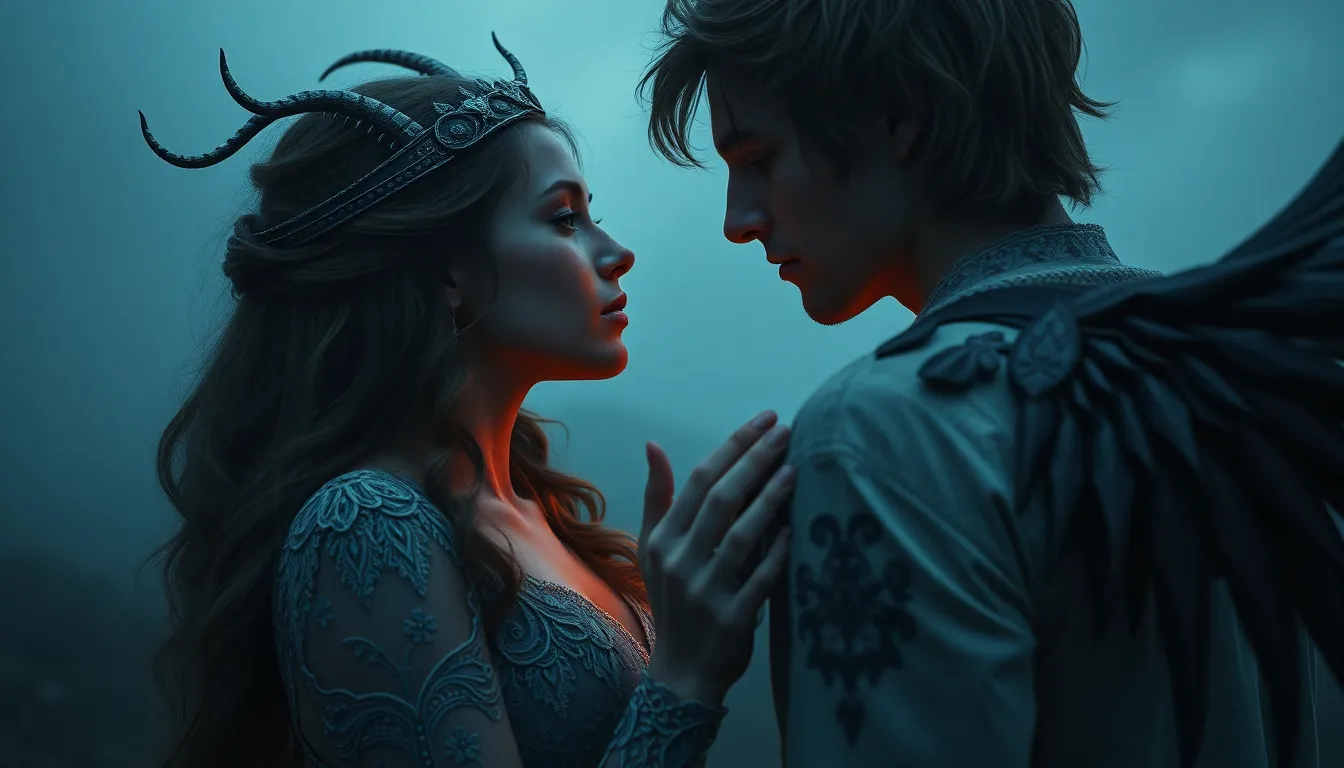Underworld Myths: The Dark Tales That Fascinate Us
I. Introduction to Underworld Myths
Underworld myths are narratives that explore the realms beyond death, often depicting a place where souls go after their mortal lives. These myths are significant in various cultures as they provide insights into how societies understand life, death, and the afterlife. Through stories of gods, heroes, and the souls of the departed, underworld myths reveal universal themes about morality, judgment, and the human condition.
These myths often include motifs such as journeys, trials, and transformations, reflecting humanity’s deep-seated fears and curiosities about what lies beyond the grave. They serve as cautionary tales and moral lessons, shaping beliefs about the consequences of one’s actions in life.
II. Historical Context of Underworld Myths
Underworld myths have been present since the dawn of civilization, with ancient cultures like the Mesopotamians, Egyptians, and Greeks creating complex narratives surrounding the afterlife. Each civilization had its own interpretation of what the underworld entailed and what it meant for the living.
- Mesopotamia: The Sumerians believed in a gloomy underworld called Kur, where all souls went, regardless of their deeds in life.
- Egypt: The Egyptians envisioned a detailed afterlife, with the Duat being a place where the soul would be judged before moving on to eternal life.
- Greece: The Greeks conceptualized Hades as both a place and a deity, embodying the inevitability of death and the unknown.
As time progressed, these concepts evolved, influenced by cultural exchanges and philosophical developments. The portrayal of underworlds has significantly impacted modern storytelling, evident in literature, films, and video games.
III. Major Underworlds in Mythology
Several underworlds from different mythological frameworks stand out for their rich narratives and symbolic meanings.
A. The Greek Underworld: Hades and its realms
In Greek mythology, Hades is the god of the underworld and the name of the realm itself. It is divided into various regions, including:
- Elysium: A paradise for the virtuous.
- Tartarus: A deep abyss used for the punishment of the wicked.
- The Asphodel Meadows: A neutral ground for those whose deeds were neither good nor bad.
B. The Egyptian Duat: Journey of the soul
The Duat is the Egyptian underworld where the soul undergoes trials and judgments. The journey includes:
- Facing monsters and obstacles.
- The weighing of the heart against the feather of Ma’at.
- Potentially moving on to the Field of Reeds or being devoured by Ammit.
C. The Norse Hel: Fate and afterlife
In Norse mythology, Hel is a realm ruled by the goddess Hel, where those who did not die a heroic death reside. It is depicted as a cold and dreary place, contrasting with the glorious halls of Valhalla.
IV. Common Themes in Underworld Myths
Underworld myths often explore several recurring themes that resonate with human experiences and moral questions:
- Death and resurrection: Many myths involve characters who die and return, symbolizing renewal and the cyclical nature of life.
- Morality and judgment: The afterlife often serves as a backdrop for moral reckoning, where deeds in life determine one’s fate.
- The duality of good and evil: These myths illustrate the complexity of human nature, showcasing both heroic and villainous traits.
V. Notable Figures from Underworld Myths
Various figures from underworld myths carry significant weight in their respective narratives:
A. Hades, Persephone, and their significance
Hades, the god of the underworld, is often associated with Persephone, his queen. Their story symbolizes the changing seasons and the cycle of life and death.
B. Osiris and the cycle of life and death
Osiris, an Egyptian god, represents resurrection and regeneration, as he was killed and resurrected by his wife, Isis. His myth highlights themes of death, renewal, and the afterlife.
C. Anubis: The guardian of the afterlife
Anubis, the jackal-headed god, is known for guiding souls to the afterlife and overseeing the mummification process. He is a symbol of protection and the journey beyond death.
VI. Underworld Myths in Contemporary Culture
The influence of underworld myths extends into contemporary culture, shaping various forms of art and entertainment:
A. Literature: Influences in novels and poetry
Many authors draw inspiration from underworld myths, weaving them into narratives that explore human emotions and existential questions.
B. Film and television: Modern interpretations
Films and TV shows often reinterpret these myths, presenting them in new contexts that resonate with modern audiences.
C. Video games and interactive media
Video games, such as “Hades” and “God of War,” allow players to engage with mythological themes in immersive ways, exploring the underworld while navigating challenges.
VII. Symbolism and Archetypes in Underworld Myths
Underworld myths are rich in symbolism and archetypes that reflect deeper psychological truths:
A. The underworld as a symbol of transformation
The descent into the underworld often represents a transformative journey, leading to self-discovery and growth.
B. Heroic journeys and the descent into darkness
Many heroes undertake journeys to the underworld, facing trials that challenge their character and resolve.
C. The role of guides and guardians in the underworld
Figures like Charon and Anubis serve as guides for souls, symbolizing the transition from life to death and the importance of guidance in difficult times.
VIII. Psychological Interpretations of Underworld Myths
Underworld myths have been the subject of psychological analysis, particularly from a Jungian perspective:
A. Jungian perspectives on shadow and archetypes
Jungian psychology views the underworld as a representation of the shadow self, encompassing the darker aspects of human nature that must be acknowledged for personal growth.
B. The underworld as a reflection of human fears and desires
These myths often reflect our deepest fears about mortality and the unknown, as well as desires for immortality and understanding.
C. The therapeutic value of engaging with dark tales
Engaging with underworld myths can provide catharsis and insight, allowing individuals to confront their fears and uncertainties about death and existence.
IX. Global Variations of Underworld Myths
Underworld myths vary significantly across cultures, each offering unique perspectives:
A. The Aztec Mictlan and its significance
Mictlan is the Aztec underworld, where souls journey through nine levels to reach their final resting place. It reflects the importance of death in Aztec culture.
B. The Buddhist concept of Naraka
Naraka represents a realm of suffering in Buddhism, where beings face the consequences of their actions before being reborn.
C. Underworld myths in indigenous cultures
Many indigenous cultures have their own underworld narratives that reflect their beliefs about life, death, and the connection to the earth.
X. Conclusion: The Enduring Fascination with Underworld Myths
The fascination with underworld myths endures due to their exploration of fundamental human questions about existence, morality, and the afterlife. These tales resonate across cultures, offering a mirror to our fears and aspirations.
As we continue to explore these myths in literature and culture, they remain relevant in helping us understand our nature and the complexities of life and death. The underworld, with its dark tales and transformative journeys, invites us to reflect on our own lives and the legacies we leave behind.



